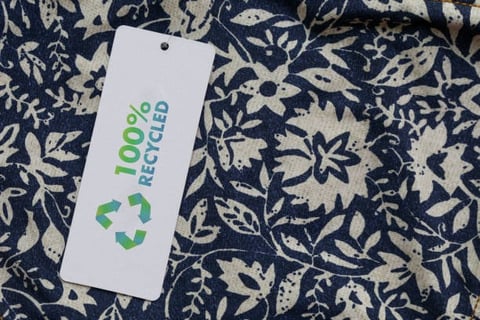Table of Contents

The Journey of Recycled Polyester Fabric: From Waste to Fashion
1. Introduction
Recycled polyester fabric has gained immense popularity in the fashion industry due to its sustainable nature and reduced environmental impact. In this article, we will delve into the journey of recycled polyester fabric, exploring its origins, manufacturing process, and the benefits it offers as a sustainable alternative to traditional polyester. Let's embark on this eco-friendly journey together!

2. Understanding Polyester
Before we delve into the world of recycled polyester fabric, it is important to understand the basics of polyester. Polyester is a synthetic fiber derived from petroleum, a non-renewable resource. It is commonly used in the textile industry due to its durability, wrinkle-resistance, and quick-drying properties. However, the production of traditional polyester has significant environmental drawbacks, including high energy consumption and greenhouse gas emissions.
3. The Need for Recycling
Given the environmental impact of traditional polyester, the need for recycling has become increasingly important. Recycling polyester helps reduce the demand for virgin materials, conserves energy, and minimizes waste generation. It also contributes to the circular economy by extending the lifespan of polyester products and reducing the reliance on fossil fuels.
4. Collection of Polyester Waste
The journey of recycled polyester fabric begins with the collection of polyester waste. This waste can come from various sources, including post-consumer waste such as discarded garments and textiles, and pre-consumer waste generated during the manufacturing process. Recycling facilities, textile recycling programs, and even some fashion brands actively participate in collecting polyester waste.
5. Sorting and Cleaning
Once collected, the polyester waste is sorted based on color and type. Sorting is essential to maintain the quality and integrity of the recycled polyester fabric. Any non-polyester materials, such as buttons or zippers, are removed during this stage. The sorted polyester waste is then thoroughly cleaned to eliminate any impurities, such as dirt or dyes, that may affect the quality of the final product.
6. Shredding and Melting
After the cleaning process, the sorted polyester waste undergoes shredding. Shredding breaks down the waste into small fibers, making it easier to handle during the subsequent steps. These shredded fibers are then melted to form molten polyester, which can be extruded into new fibers or transformed into other polyester products.
7. Spinning and Fiber Production
During the spinning process, the molten polyester is forced through tiny holes to create filaments. These filaments are then cooled and solidified to form fibers. These fibers can be further processed to create yarns, fabrics, or other polyester-based products. The quality of the recycled polyester fabric largely depends on the spinning and fiber production techniques used.
8. Benefits of Recycled Polyester Fabric
Recycled polyester fabric offers numerous benefits both to the environment and to consumers. Firstly, it reduces the demand for virgin polyester, which in turn conserves energy and reduces greenhouse gas emissions. Additionally, recycling polyester waste helps divert it from landfills, reducing the environmental burden. From a consumer perspective, recycled polyester fabric possesses the same desirable properties as traditional polyester, including durability, wrinkle-resistance, and moisture-wicking abilities.
9. Applications of Recycled Polyester Fabric
Recycled polyester fabric finds its application in various industries, including fashion, sportswear, and home textiles. It can be used to create clothing, accessories, upholstery, and even carpets. The versatility of recycled polyester fabric makes it a sustainable choice for both everyday apparel and high-performance activewear.
10. Conclusion
In conclusion, the journey of recycled polyester fabric starts with the collection of polyester waste, followed by sorting, cleaning, shredding, and melting. The molten polyester is then spun into fibers, which can be used to create a wide range of products. Recycled polyester fabric offers a sustainable alternative to traditional polyester, reducing the environmental impact of the fashion industry and contributing to a circular economy. By choosing recycled polyester fabric, we can make a positive impact on the environment without compromising on style or quality.
